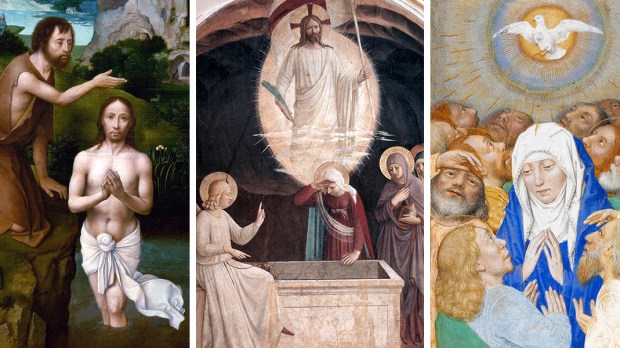By the time this decade ends in 2030, Christians all over the world will be at the cusp of the most significant anniversary since the Great Jubilee Year 2000, when Christendom celebrated the 2,000th anniversary of the birth of Christ. Starting in 2030, a flurry of unprecedented jubilees will come upon the Christian world: the 2,000th Jubilee of the Baptism of the Lord marking the beginning of the three-year ministry of the Redeemer. Three years later in 2033, the 2,000th Jubilee of the institution of the Eucharist, the 2,000th anniversary of the Passion-death-resurrection of Christ, and just 50 days after this, the 2,000th anniversary of Pentecost.
Perhaps it may be best to consider the events surrounding 2033 as a Triple Jubilee for each year of the three-year ministry of the Lord. The three-year celebration would provide an evangelizing and ecumenical moment the likes of which the Church has not seen since the Second Vatican Council.
In 1979, St. Pope John Paul II wrote his first encyclical Redemptor Hominis, presenting the program for his pontificate. In the very first section of this encyclical, Pope John Paul II brought the Church’s attention to the then forthcoming Great Jubilee Year 2000 with the subtitle – At the Close of the Second Millennium.
One is struck by the urgent tone of the message so far in advance, as if time was short. The intention was no doubt to provide enough lead time for the Universal Church to prepare spiritually and programmatically for the Great Jubilee. In 1994, the Central Committee of the Jubilee of the Holy Year 2000 was established for this very purpose.
It is of great significance that Pope John Paul II presented the birth of the Messiah (John 1:1) and the redemption of humanity (John 3:16) as a two-part unity. The significance of the Jubilee Year was the celebration of the Redemption of Mankind – at the uniquely biblical marker of 2,000 years – and this redemption has two historical poles: the Nativity of the Lord and the Resurrection of our Lord Jesus Christ, both of which mark the two spiritual peaks of the liturgical year.
Having said this, we must consider that the Great Jubilee 2000 temporally emphasized the first of the two-pole historical event of the Redemption of Mankind. The second pole will be realized in 2033 when the Universal Church celebrates the 2,000th anniversary of the Passion-death-resurrection of the Savior of the world.
The anniversary of the Resurrection also spills over into the Great Jubilee of Pentecost (2033) which not just commemorates the birth of the Church, but also the ushering in of the new order of grace signified by the undoing of Babel through the spiritual gift of tongues, fruit of the outpouring of the Holy Spirit.
The question that begs to be asked, considering all of this is: How will we prepare for these magnificent events now just 10 years away?

